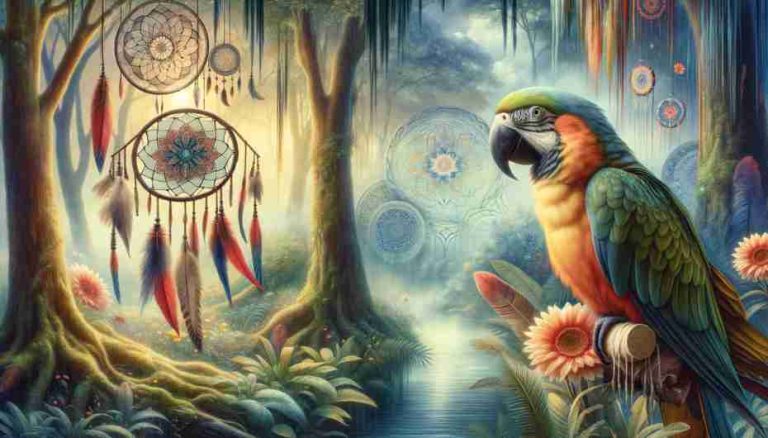The Symbolism and Spiritual Meaning of Triangles

Triangles have been revered as sacred symbols since ancient times, transcending geographical and cultural boundaries. Their presence can be found in the art, architecture, and spiritual practices of diverse civilizations, from the pyramids of Egypt to the yantras of Hinduism. The Spiritual Meaning of Triangles is deeply rooted in the significance of the number three, which is often associated with completeness, creativity, and the expression of the divine.
Triangles represent balance, harmony, and the interconnectedness of all things. Their three sides symbolize the unity of mind, body, and spirit, or the past, present, and future. This geometric shape reminds us of the inherent order and perfection in the universe, inviting us to seek equilibrium and alignment within ourselves.
| Key Point | Details |
|---|---|
| Sacred Symbol | Triangles are revered sacred symbols across many ancient cultures, representing divinity, creativity, and interconnectedness. |
| Religious Meanings | In Christianity, the triangle symbolizes the Holy Trinity. In Hinduism and Buddhism, it represents aspects of enlightenment. |
| Balance/Stability | The three sides signify balance of mind, body, spirit. The orientation (up or down) carries different symbolic meanings. |
| Sacred Geometry | Triangles are fundamental shapes in sacred geometry, seen as blueprints of creation and the divine cosmic order. |
| Numerology | The number three, represented by the triangle, is linked to creativity, growth, and manifesting one’s highest potential. |
| Art/Architecture | Triangular shapes and motifs are prominently featured for their symbolic value, structure, and aesthetics across history. |
Triangle Symbolism in Major Religions
The triangle holds profound spiritual significance across many of the world’s major religions, representing divine concepts central to each faith.
Christianity and the Holy Trinity
In Christianity, the triangle holds a profound spiritual meaning as a symbol of the Holy Trinity – the Father, the Son, and the Holy Spirit. This concept of the divine existing in three distinct yet interconnected forms is beautifully represented by the three equal sides of the triangle. The story of the Three Wise Men, who followed the star to witness the birth of Jesus, further reinforces the triangle’s association with the divine and the spiritual journey.
Hinduism and the Third Eye
In Hinduism, the triangle is closely linked to the concept of the Third Eye, also known as the Anja chakra. This energy center, represented by a triangle, is associated with spiritual enlightenment, intuition, and the ability to perceive the deeper truths of existence. The upward-pointing triangle symbolizes the ascension of consciousness and the journey towards self-realization.
Buddhism and the Trikaya
Buddhism embraces the concept of the Trikaya, or the three bodies of Buddhahood – the Dharmakaya (the transcendent body), the Sambhogakaya (the blissful body), and the Nirmanakaya (the earthly body). The triangle is a powerful symbol that represents the balance and harmony required to attain enlightenment, as it encompasses the physical, spiritual, and transcendent aspects of existence.
Islam and the Three Aspects of Life
In Islam, the triangle is often associated with the three fundamental aspects of life: Taqwa (devotion and reverence for God), Ramadan (the sacred period of fasting), and the Quran (the holy scripture). This triangle spiritual meaning represents the path to righteousness, guidance, and the attainment of spiritual fulfillment through the observance of these pillars.
| Religion | Symbolic Meaning |
|---|---|
| Christianity | Represents the Holy Trinity (Father, Son, Holy Spirit) |
| Hinduism | Symbol of the Third Eye (Anja chakra) and spiritual enlightenment |
| Buddhism | Symbolizes the Trikaya (three bodies of Buddhahood) |
| Islam | Represents Taqwa (fear of Allah), Ramadan, and the Quran |
Triangle Symbolism in Ancient Civilizations
Ancient civilizations revered the triangle as a powerful symbol imbued with sacred meaning, incorporating it into their monumental architecture and spiritual traditions.
Ancient Egypt and the Pyramids
The ancient Egyptians revered the triangle as a symbol of stability, power, and spirituality. The iconic pyramids, with their triangular faces, were not only architectural marvels but also representations of the eternal journey of the soul. The triangle’s association with protection, strength, and the afterlife made it a prominent feature in Egyptian art and mythology.
Sacred Geometry and the Pythagoreans
The Pythagoreans, an ancient Greek philosophical and religious movement, held the triangle in high regard as a building block of the universe. They believed that the triangle, along with other geometric shapes, formed the foundation of all creation. The Pythagoreans revered the triangle as a symbol of wisdom, harmony, and the divine order that permeates the cosmos.
Enjoyed this post? See what else we have.
The Upward and Downward-Pointing Triangles
The orientation of a triangle holds profound symbolic significance. An upward-pointing triangle is often associated with spiritual awakening, enlightenment, and the element of fire. Its upward trajectory represents the ascension of consciousness, the journey towards higher realms of understanding, and the purifying power of the divine flame.
In contrast, a downward-pointing triangle is connected to the material world, the element of water, and the principle of receptivity. It symbolizes the grounding forces of nature, the ebb and flow of life’s cycles, and the nurturing qualities of the feminine divine. This triangle reminds us to embrace the physical realm while maintaining a connection to the spiritual.
The Interlocking Triangles
When an upward-pointing triangle and a downward-pointing triangle are interlocked, they form a powerful symbol known as the Star of David or the Seal of Solomon. This ancient symbol represents the union of the divine masculine and feminine energies, the balance of opposing forces, and the path to harmony and enlightenment.
The interlocking triangles remind us that true spiritual growth and fulfillment can only be achieved when we embrace both the material and the spiritual realms, the earthly and the celestial, the yin and the yang. It is a call to integrate these seemingly contradictory aspects of existence into a cohesive whole.
Triangle Symbolism in Numerology
In numerology, the number three holds great significance, and its connection to the triangle is undeniable. The number three is associated with creativity, communication, and the expression of the inner divine. It represents growth, development, and the manifestation of our highest potential.
The triangle, with its three sides, is a visual representation of this numerological principle. It reminds us to embrace our creative power, to communicate our truth with authenticity, and to allow the divine spark within us to shine forth and illuminate our path.
Incorporating Triangle Symbolism into Spiritual Practice
The profound symbolism of the triangle can be incorporated into various spiritual practices and rituals. Using triangle-shaped crystals or creating sacred art featuring triangular patterns can enhance meditation and energy healing practices. Placing triangle symbols on altars or wearing them as jewelry can serve as a reminder of our connection to the divine and our commitment to spiritual growth.
Additionally, exploring ancient traditions and rituals that involve triangle symbolism can deepen our understanding and appreciation of this powerful shape. From the pyramids of ancient Egypt to the sacred geometry of the Pythagoreans, the triangle has left an indelible mark on the spiritual practices of countless cultures.
Triangle Symbolism in Indigenous and Lesser-Known Spiritual Traditions
While the triangle’s symbolism is well-known in major world religions, its significance also permeates the belief systems of indigenous cultures and lesser-studied spiritual paths.
Native American Cultures
For many Native American tribes, the triangle held deep spiritual significance, representing the three realms of existence: the sky, the earth, and the underworld. This concept of interconnectedness between the celestial, terrestrial, and subterranean worlds was beautifully captured in their art and architecture, where triangular motifs and designs were prominently featured.
The triangle was also seen as a symbol of fertility and abundance, reflecting the cyclical nature of life and the harmonious relationship between humans and the natural world. In some traditions, the triangle represented the three stages of life: birth, adulthood, and death, reminding us of the eternal cycle of existence.
| Tribe/Culture | Triangle Symbolism |
|---|---|
| General | Three realms: sky, earth, underworld |
| General | Fertility, abundance, cycle of life |
| Specific Examples | Past, present, future (African tribes) |
| Divine feminine, childbirth (African tribes) | |
| Cosmic order, celestial bodies (Maya, Aztecs) |
African Tribes
In various African cultures, the triangle was revered as a symbol of fertility and abundance. Triangular patterns were woven into traditional textiles and incorporated into art, serving as a visual representation of the life-giving forces of nature. The triangle’s three sides were often associated with the past, present, and future, emphasizing the importance of honoring one’s ancestors while embracing the present and preparing for the future.
Additionally, the triangle was seen as a representation of the divine feminine, celebrating the creative power and nurturing qualities of women. This symbolic connection to fertility and the cycles of life made the triangle a prominent feature in rituals and ceremonies related to childbirth, harvest, and other celebrations of renewal and growth.
Ancient Mesoamerican Civilizations
In the ancient civilizations of Mesoamerica, such as the Maya and the Aztecs, the triangle held a profound connection to the celestial bodies – the sun, the moon, and the stars. Their pyramids and temples were often constructed with triangular shapes, reflecting their reverence for these celestial entities and their belief in the cosmic order.
The triangle was also associated with the concept of duality, representing the balance between opposing forces such as light and dark, life and death, and the masculine and feminine energies. This duality was embodied in the interlocking triangles, a symbol that represented the union of these opposing forces and the path to harmony and enlightenment.
The Psychological and Emotional Implications of Triangle Symbolism
Beyond its overt religious and cultural associations, the triangle carries deep psychological and emotional resonance as a representation of the integrated self.
| Aspect | Symbolic Representation |
|---|---|
| Personal Growth | Mind, body, spirit – integrated self |
| Self-Awareness | Journey of self-discovery and inner balance |
| Emotional Balance | Grounding force, stability, resilience |
| Emotional Healing | Integration of thoughts, feelings, actions |
Personal Growth and Self-Awareness
Beyond its spiritual and cultural significance, the triangle also holds profound psychological and emotional implications. On a personal level, the triangle can be seen as a representation of the mind, body, and spirit – the three interconnected aspects of our being. Its three sides remind us of the importance of maintaining balance and harmony within ourselves, nurturing our mental, physical, and spiritual well-being.
The triangle’s association with self-discovery and inner balance makes it a powerful symbol for those on a journey of personal growth and self-awareness. By embracing the triangle’s symbolism, we can cultivate a deeper understanding of our true selves and strive for a more integrated and fulfilling existence.
Emotional Balance and Stability
The triangle’s stable and unshakable form has made it a symbol of emotional balance and stability. Its three sides represent the grounding forces that anchor us in times of turmoil, reminding us of the importance of maintaining a solid foundation upon which to build our lives.
In emotional healing practices, the triangle can be used as a visual representation of the integration of our thoughts, feelings, and actions. By aligning these three aspects of our being, we can cultivate a sense of inner peace and emotional resilience, better equipped to navigate the challenges and complexities of life.
Triangle Symbolism in Art, Architecture, and Design
The profound spiritual symbolism of the triangle has profoundly influenced the realms of art, architecture, and design throughout human history. Its simple yet powerful form has inspired creatives across cultures and eras to incorporate triangular shapes, patterns, and geometries into their works.
Sacred Geometry and the Golden Ratio
The triangle has played a pivotal role in the study of sacred geometry, a field that explores the underlying patterns and proportions found in nature and the cosmos. One of the most famous examples is the golden ratio, a mathematical ratio that is often represented by the Greek letter phi (φ). This ratio is found in the proportions of the isosceles triangle and is believed to be the blueprint for creation itself.
The golden ratio has been used by architects, artists, and designers throughout history to create aesthetically pleasing and harmonious works. From the Parthenon in Athens to the Mona Lisa by Leonardo da Vinci, the triangle and its connection to the golden ratio have left an indelible mark on the world of art and design.
Architectural Marvels and Monuments
The triangle’s symbolism of strength and stability has made it a popular choice in architectural design. Ancient civilizations, such as the Egyptians and the Maya, incorporated triangular shapes into their monumental structures, creating awe-inspiring pyramids and temples that have stood the test of time.
In modern architecture, the triangle continues to be a prominent feature, with iconic buildings like the Louvre Pyramid in Paris and the Sydney Opera House in Australia showcasing the versatility and beauty of triangular forms. These structures not only serve functional purposes but also serve as powerful reminders of the enduring spiritual significance of the triangle.
Art and Design Movements
The influence of triangle symbolism can be seen in various art and design movements throughout history. From the geometric abstraction of the Cubists to the minimalist designs of the Bauhaus movement, the triangle has been a recurring motif, representing the artists’ quest for simplicity, balance, and the essence of form.
In contemporary art and design, triangular patterns and shapes continue to be explored, often imbued with deeper symbolic meanings that reflect the artists’ personal journeys and spiritual explorations. The triangle’s ability to convey both strength and dynamism has made it a versatile tool for creative expression.
Multimedia and Interactive Elements
In our modern, digital age, the triangle’s symbolism has found new avenues of expression through multimedia and interactive elements. Videos and animations can bring the triangle’s spiritual significance to life, allowing viewers to immerse themselves in the rich tapestry of its symbolism.
Interactive diagrams and virtual reality experiences offer the opportunity to explore the triangle’s role in sacred geometry and its connection to the cosmos. Guided meditations and rituals incorporating triangle symbolism can provide a powerful means of connecting with the divine and cultivating inner peace and spiritual growth.
The Spiritual Meaning of Triangles has transcended time and cultures, weaving a tapestry of symbolism that connects us to the deepest mysteries of existence. From the ancient pyramids to modern art and architecture, the triangle has served as a powerful reminder of our innate connection to the divine.
Whether representing the Holy Trinity, the three realms of existence, or the balance of opposing forces, the triangle invites us to explore the profound depths of our spiritual selves. Its enduring presence serves as a beacon, guiding us on our journey towards enlightenment, harmony, and a deeper understanding of the universe we inhabit.
Sources:






